Is getting enough protein on a vegan diet tricky? Think again.
Plants are full of surprises, and protein is one of them. A high-protein vegan diet can provide numerous health benefits, including improved muscle health, better weight management, and enhanced satiety.
From hearty beans to nutty snacks, there are endless ways to add protein to your meals. You don’t need fancy ingredients or complicated recipes.
Here are seven easy tips to help you pack more protein into your vegan diet. Simple, tasty, and totally plant-powered!
1. Add Legumes to every meal
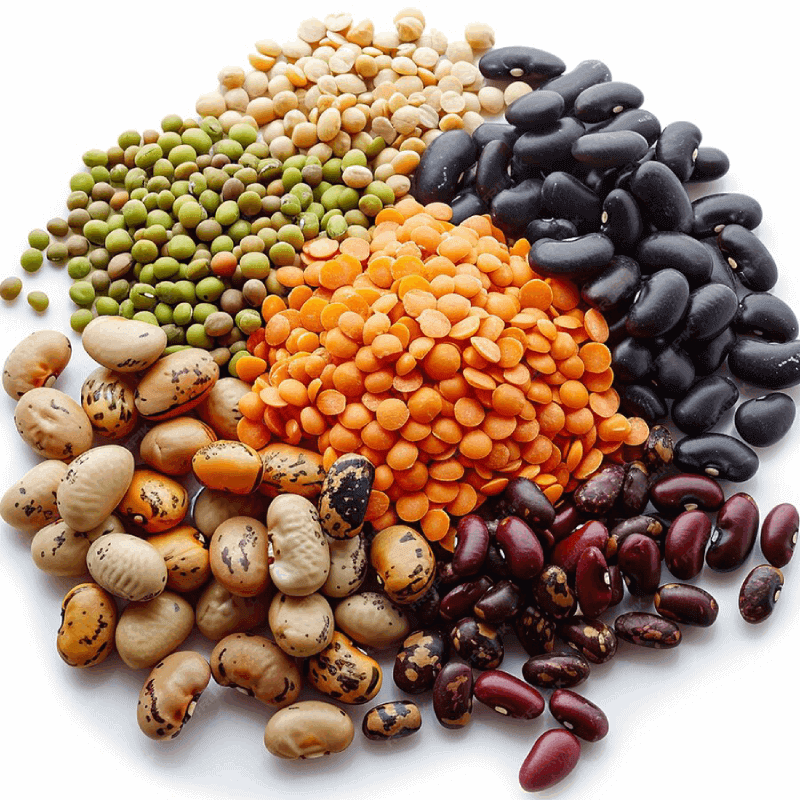
Legumes are a vegan’s best friend when it comes to protein. Lentils, chickpeas, black beans, and more are not only packed with protein but also loaded with fiber and other nutrients.
Here’s how much protein you can get:
- Lentils (1 cup cooked): Around 18g
- Black beans (1 cup cooked): About 15g
- Chickpeas (1 cup cooked): Roughly 14g
The best part? They’re incredibly versatile!
- Toss lentils into soups or salads.
- Whip up a creamy hummus with chickpeas.
- Add black beans to tacos or wraps.
- Snack on roasted chickpeas for a crunchy treat.
Legumes are not only protein-packed but also affordable, filling, and delicious. There are many ways to enjoy them, from soups to salads, tacos to wraps.
They’re an easy and economical addition to any meal. Their versatility allows you to create various dishes without breaking the bank.
2. Embrace Soy-Based Proteins
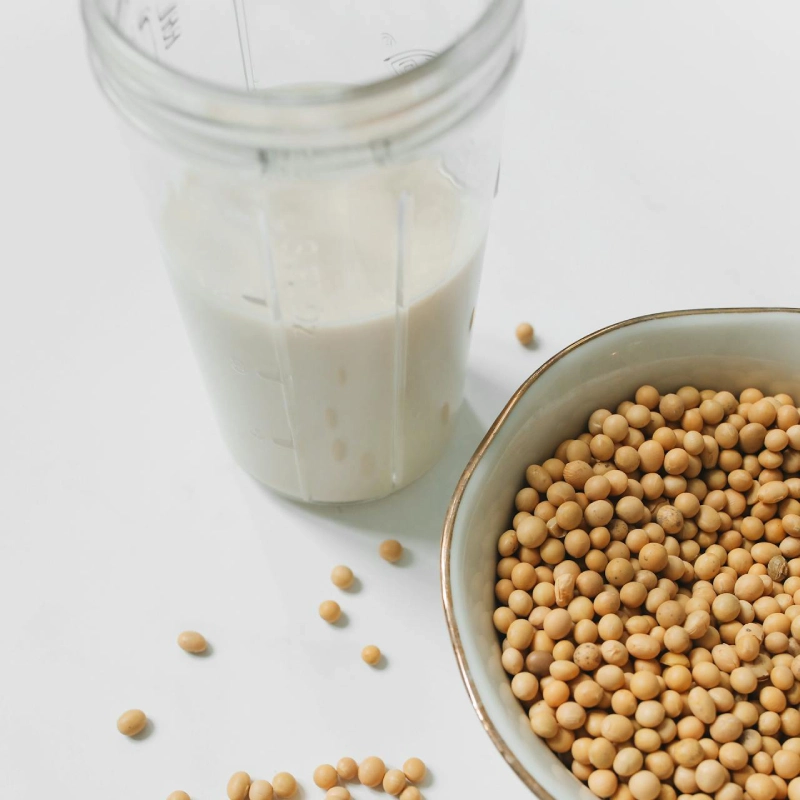
Soy-based foods are packed with complete protein, providing all the essential amino acids the body can’t make alone. Thus, they are a key component of a balanced vegan diet.
Here’s the protein content for common soy foods:
- Tofu (3 ounces): 6–13 grams
- Tempeh (½ cup): 16–22 grams
- Edamame (½ cup): Approximately 6 grams
- Soy Milk (8 ounces): 3–10 grams
Here are some ways to incorporate these into your meals:
- Tofu: Marinate and grill for sandwiches, scramble as an egg substitute, or blend silken tofu into smoothies for added creaminess.
- Tempeh: Stir-fry with vegetables, crumble into sauces for a meaty texture, or bake as a hearty salad topping.
- Edamame: Enjoy steamed with a sprinkle of sea salt, tossing it into salads, or blending it into a protein-rich dip.
- Soy Milk: Use in cereals, smoothies, or as a base for creamy soups.
Incorporating these soy-based proteins can diversify your meals and ensure you’re meeting your protein needs on a vegan diet.
RELATED: 9 Creative Ways to Use Tofu in Your Vegan Cooking
3. Incorporate Vegan Protein Powders
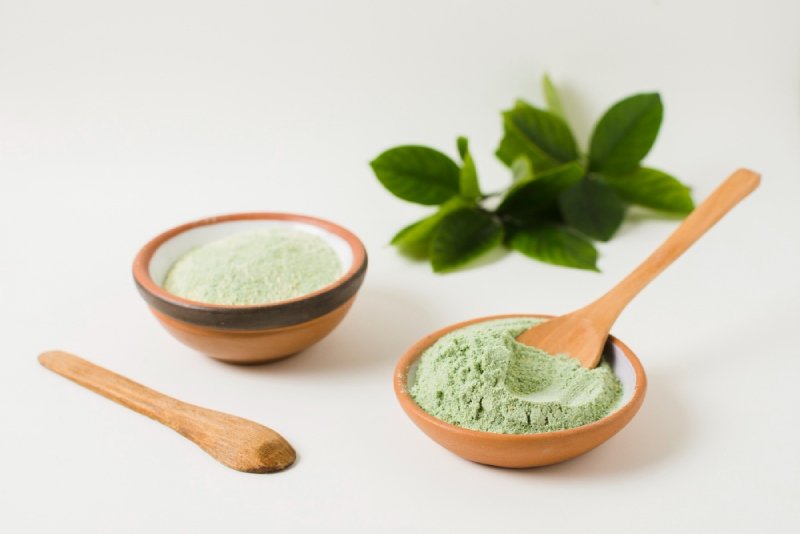
Vegan protein powders provide an easy and efficient way to increase protein intake, making them ideal for busy individuals or those with higher protein requirements.
Derived from plant sources, these powders can be easily added to various meals and snacks.
Types of Vegan Protein Powders:
- Pea Protein: Rich in iron and branched-chain amino acids, pea protein is a popular choice for muscle support.
- Hemp Protein: Contains healthy fats and fiber, making it a nutritious option for overall health.
- Brown Rice Protein: Easy to digest and is commonly paired with other proteins to form a complete amino acid profile.
- Soy Protein: Complete source of all essential amino acids, supporting muscle repair and growth effectively.
Incorporation Tips:
- Smoothies: Blend a scoop of your preferred vegan protein powder with fruits and plant-based milk for a quick, protein-rich breakfast or post-workout snack.
- Baking: Enhance the protein content of muffins, pancakes, or energy bars by adding protein powder to the batter.
- Oatmeal: Stir in a serving of protein powder into your morning oats to keep you fuller longer.
- Homemade Protein Powder: Consider creating your own blend using ingredients like pumpkin seeds, chia seeds, almond flour, and ground flax. This allows you to control the ingredients and customize flavors.
When selecting a vegan protein powder, consider factors such as protein content per serving, ingredient quality, and any additional nutrients that align with your dietary goals.
Incorporating these powders can help you meet your protein needs while enjoying a varied and balanced vegan diet.
4. Snack on Protein-Rich Nuts and Seeds

Nuts and seeds provide plant-based protein, healthy fats, and vital nutrients, making them an important part of a vegan diet.
Top Protein-Rich Nuts and Seeds:
- Hemp Seeds: Approximately 9 grams of protein per 3 tablespoon serving.
- Pumpkin Seeds: Around 7 grams of protein per 1-ounce (28-gram) serving.
- Peanuts: About 7 grams of protein per ounce.
- Almonds: Approximately 6 grams of protein per ounce.
- Sunflower Seeds: Roughly 5.5 grams of protein per ounce.
Incorporation Tips:
- Snacking: Enjoy a handful of mixed nuts or seeds as a satisfying, protein-packed snack.
- Salads and Smoothies: Sprinkle chia seeds or flaxseeds over salads or blend them into smoothies for an added protein boost.
- Nut Butter: Spread almond or peanut butter on whole-grain toast or incorporate it into sauces and dressings.
- Baking: Include chopped nuts in baked goods like muffins or energy bars to enhance protein content.
Adding a variety of nuts and seeds to your meals can help you meet your protein needs. They also supply essential vitamins, minerals, and healthy fats for a balanced diet.
5. Opt for High-Protein Grains
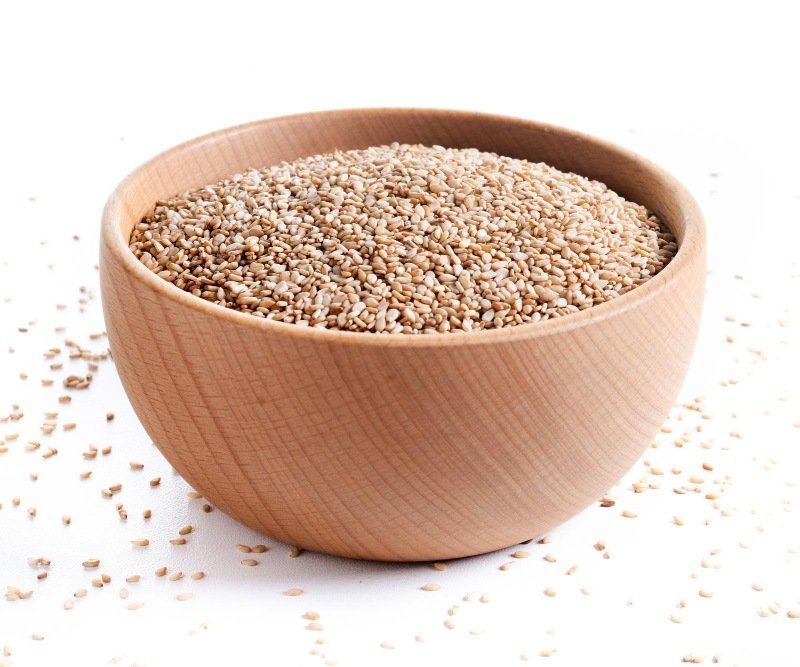
Incorporating high-protein grains into your diet can enhance your protein intake while providing essential nutrients and fiber.
Top High-Protein Grains:
- Quinoa: Approximately 4.4 grams of protein per 100 grams.
- Amaranth: About 8 to 9 grams of protein per cooked cup.
- Buckwheat: A versatile grain alternative that contributes to protein intake.
- Teff: A nutrient-dense grain that adds variety and protein to meals.
Incorporation Tips:
- Salads and Bowls: To boost protein content, use quinoa or amaranth as a base for salads and grain bowls.
- Breakfast Porridge: Prepare a warm porridge using amaranth or teff for a protein-rich start to your day.
- Baking: Include buckwheat flour in baking recipes for pancakes, muffins, or bread to enhance protein intake.
- Side Dishes: Serve teff or quinoa as side dishes to complement main courses, adding protein and texture.
Adding high-protein grains to your meals boosts protein intake while offering essential vitamins, minerals, and fiber for a well-rounded vegan diet.
6. Explore Plant-Based Meat Alternatives
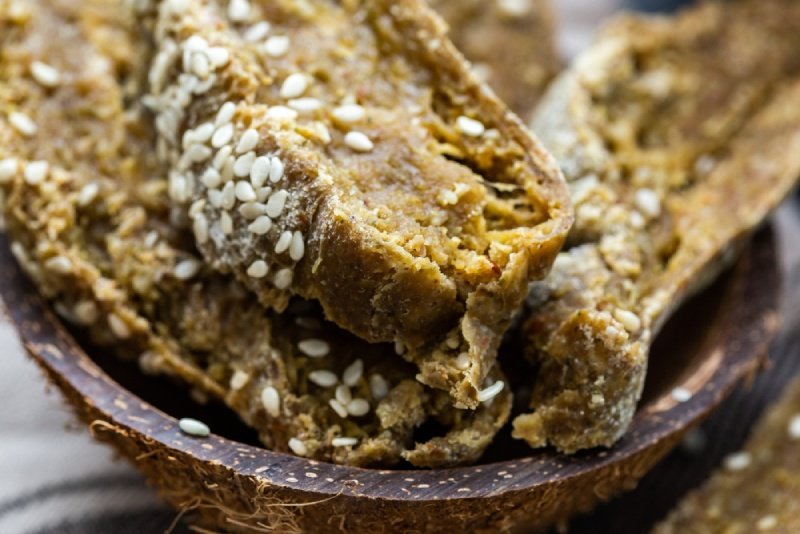
Plant-based meat alternatives offer a variety of protein-rich choices. They closely resemble the taste and texture of meat, making them an excellent option for a vegan diet.
Popular Plant-Based Meat Alternatives:
- Seitan: Seitan, or wheat gluten, is a flexible meat substitute known for its chewy texture. It offers roughly 25 grams of protein for every 100 grams.
- Tempeh: Made from fermented soybeans, tempeh is rich in protein and has a firm texture. It provides about 19 grams of protein per 100 grams.
- Tofu: A staple in many vegan diets, tofu is made from soybeans and offers a soft texture. It has about 8 grams of protein per 100 grams.
- Lupin Protein: Derived from lupin beans, this protein source is gaining popularity for its high protein content and versatility in various dishes.
- Soy Curls: Made from whole soybeans, soy curls have a texture similar to chicken and are high in protein. They contain about 33 grams of protein per 100 grams.
Incorporation Tips:
- Stir-Fries and Curries: Add seitan or tempeh to stir-fries and curries for a protein boost.
- Sandwiches and Wraps: Use tofu or soy curls as fillings for sandwiches and wraps.
- Grilled Dishes: Marinate and grill plant-based meat alternatives for a satisfying main course.
- Burgers and Sausages: Opt for plant-based burgers and sausages as protein-rich substitutes for traditional meat options.
Including plant-based meat alternatives in your meals helps you meet your protein requirements. They also bring new flavors and variety to your vegan diet.
7. Incorporate High-Protein Vegetables
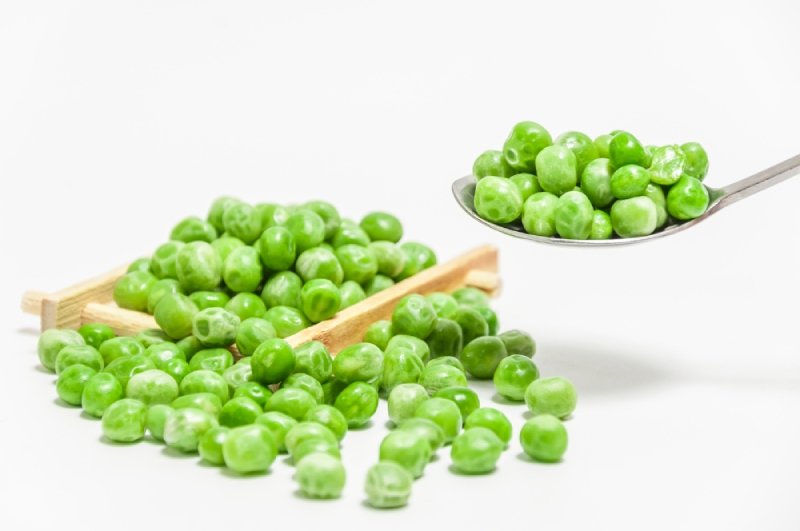
Many vegetables are excellent plant-based protein sources, offering essential nutrients and versatility in your meals.
Top High-Protein Vegetables:
- Green Peas: One cup of cooked green peas provides about 9 grams of protein.
- Spinach: One cup of cooked spinach contains approximately 5 grams of protein.
- Artichokes: One medium artichoke offers around 4 grams of protein. citeturn0search7
- Asparagus: One cup of cooked asparagus provides about 4 grams of protein.
- Brussels Sprouts: One cup of cooked Brussels sprouts contains approximately 4 grams of protein.
Incorporation Tips:
- Salads: Add cooked green peas or artichokes to salads for a protein boost.
- Stir-Fries: Include spinach or Brussels sprouts in stir-fries for added protein and flavor.
- Roasted Dishes: Roast asparagus with a drizzle of olive oil and herbs, creating a flavorful and protein-rich side dish.
- Soups and Stews: Incorporate these vegetables into soups and stews to enhance protein content.
Including these high-protein vegetables in your meals helps you meet your protein needs. They also add flavor and nutrition to a variety of tasty dishes.
The Bottom Line
Getting enough protein on a vegan diet is simpler than it seems.
You can meet your protein needs with plant-based sources. Include legumes, soy products, seeds, nuts, and high-protein grains.
Add meat alternatives and vegetables to your meals. These foods also provide essential nutrients for a balanced diet.
Whether you’re new to plant-based eating or a seasoned vegan, experimenting with different protein-rich foods can add variety and flavor to your meals while nourishing your body.
With careful planning, you’ll be well on your way to enjoying a protein-packed, plant-based lifestyle.
So, embrace the many vegan protein options available, and fuel your body with the goodness of whole, plant-based foods!

